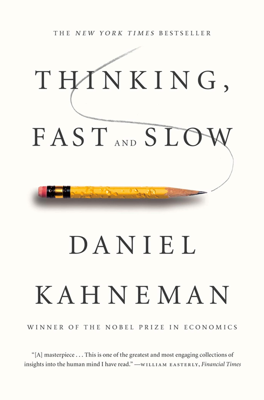The Characters of the Story
Two Systems of Thinking: System 1 and System 2
Automatic vs. Effortful Thinking: System 1 operates automatically, swiftly, and with little effort. This system handles tasks like detecting hostility in a voice or driving on an empty road. It's capable of making fast associations and reactions but is also prone to biases and systematic errors. System 2, on the other hand, requires effortful mental activities and is engaged when complex computations or focused attention is needed, such as solving a math problem or making a conscious decision.
Interaction and Control: The two systems interact continuously; System 1 generates impressions and suggestions that System 2 can either endorse or override. Typically, System 2 is in a relaxed state and only intervenes when difficult or novel situations arise that demand more focused attention.
Examples of System 1 Activities:
- Making a "disgust face" when seeing a disturbing image.
- Completing the phrase “bread and…”
- Detecting the distance between two objects.
Examples of System 2 Activities:
- Filling out a tax form.
- Checking the validity of a complex argument.
- Focusing attention in a noisy environment.
Cognitive Illusions: Similar to visual illusions, cognitive illusions can trick our thinking processes. An example provided is the Müller-Lyer illusion, where two lines of the same length appear different due to the shapes at their ends. System 1 processes the visual input and perceives one line longer, while System 2 knows from measuring that they are equal in length.
Effort and Error Recognition: System 1 operates continuously and beyond voluntary control, making it prone to errors in judgment and perception. System 2 can potentially recognize these errors, but this often requires increased effort, attention, and awareness.
Conflict and Self-Control: A recurrent theme is the conflict between automatic responses (System 1) and intentional control (System 2), where System 2 must exert effort to countermand or modify responses initiated by System 1. This is highlighted in scenarios requiring self-control, like resisting saying something inappropriate or managing one's reaction to a provocative situation.
Useful Fictions of Systems: Kahneman presents System 1 and System 2 not as actual physiological systems but as useful metaphorical constructs to aid in understanding the complexities of human thinking and decision-making processes. These systems help elucidate how different types of thinking handle various tasks and situations, though they are simplifications for the sake of explanation.
Throughout the chapter, Kahneman explores the characteristics and interactions of these two fundamental systems of thought, offering insights into how they shape our perceptions, judgments, and decisions.
